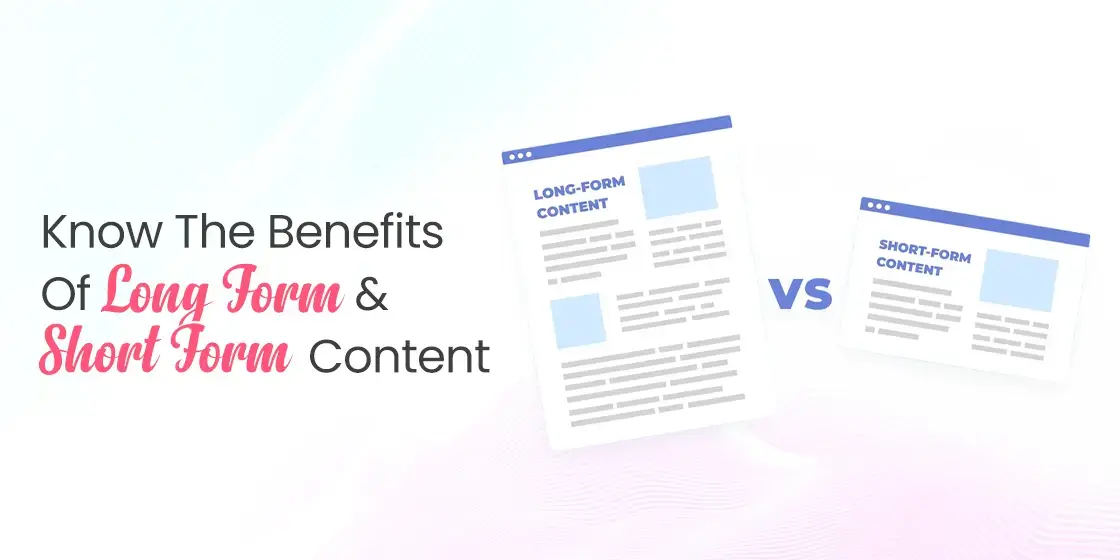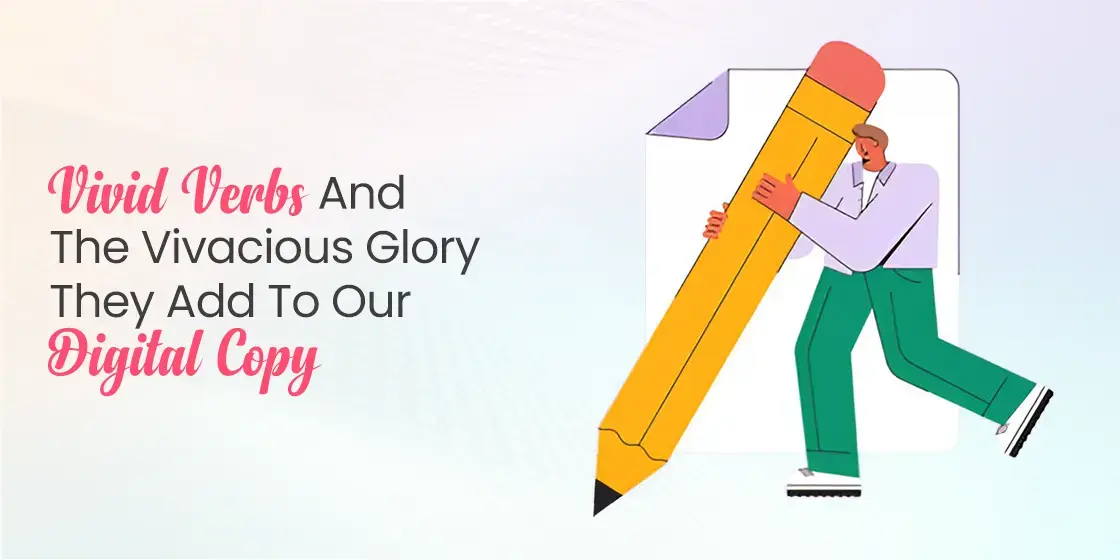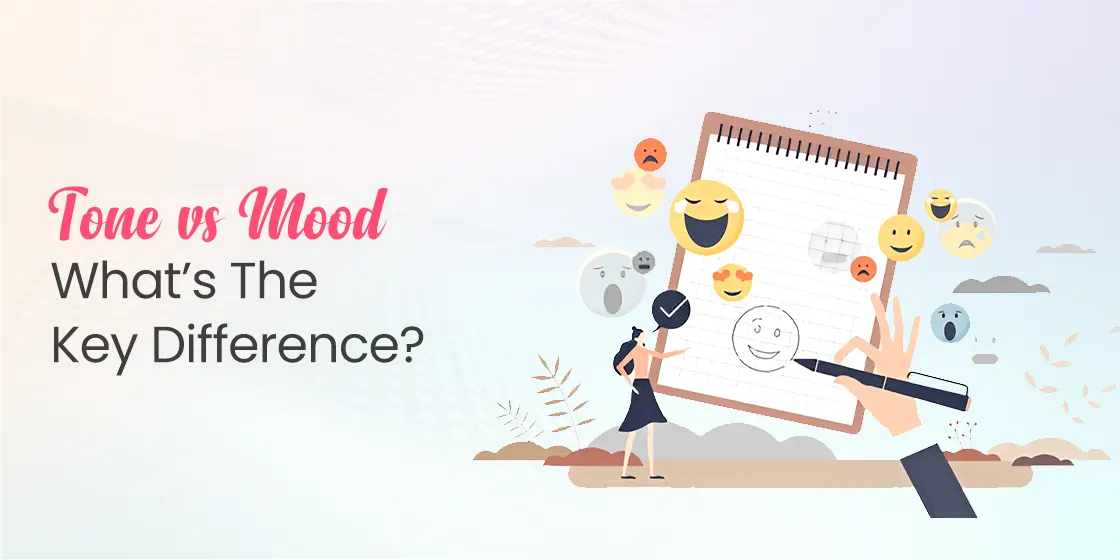Table of Content
Know the Difference Between Long Form and Short Form Content
Being a digital marketer or SEO professional, you need to use content wisely on website pages to gain regular traffic. It is an important part of SEO because Google only ranks those pages that provides quality information. Keeping this in view, you need to evaluate which type of content you want to publish on the website. Whether it’s a long form or short form content, the understanding must be accurate keeping in view the requirements of the project. There are websites that have seen great ranking results primarily on the basis of content, hence it is considered important in SEO.
Ideally, you should consult with professional content writing services to get help in this regard, as they understand all the semantics of using different types of content on the website. There are plenty of them working in the market, in which Econtentsol is often said to be the best option to go with. Meanwhile, if you want to manage all the content related things by yourself, try to first get a good knowledge about the long form vs short form content. It will let you know the type of content that is required on each page, ranging from landing pages to blogs and more.
If you do not know how to use long form vs short form content in the website, read this blog in detail. It will clear all the confusions related to the usage of these content types. Let’s start from the basics understanding what is a long form and short form content, and what are the core differences between them.
What is Long form Content?

Long form content refers to any type of content that exceeds 1,000 words for written formats, such as articles and blogs. This type of content can take on many forms, including in-depth blog posts, comprehensive infographics, engaging social media posts, and informative videos. The goal of long form content is to provide substantial information, insights, or entertainment to the audience, allowing them to engage deeply with the material. By diving into topics with greater depth and detail, long form content offers a more thorough exploration of the subject matter compared to shorter pieces.
For content creators and marketers, long form content serves as a powerful tool to capture and retain the audience’s attention. It allows for a more nuanced discussion of topics, enabling creators to cover various angles, provide comprehensive analysis, and offer valuable information that readers or viewers may find difficult to obtain elsewhere. This approach often leads to higher engagement rates, as audiences are more likely to share, comment, and interact with content that they find particularly informative or compelling.
From a SEO perspective, long form content is highly advantageous. Search engines prioritize cornerstone content that demonstrates depth, relevance, and authority on a given topic. By consistently publishing well-researched, comprehensive content, brands can establish themselves as authoritative sources within their industry. This authority not only improves search engine rankings but also helps in building trust and credibility with the target audience. Ultimately, long form content becomes a cornerstone for content marketers aiming to boost visibility, and engagement.
What is a Short Form Content?

Short form content is generally characterized by its brevity, with text-based pieces usually being under 1,000 words. This category encompasses a wide range of content types, such as concise blog articles, eye-catching infographics, brief videos, and quick, engaging social media posts. Due to its shorter length, short form content is designed to be easily consumable, making it ideal for audiences who prefer quick and straightforward information. The goal of this type of content is often to capture attention immediately and deliver key messages in a clear and impactful.
One of the primary reasons content marketers favor short form content is its efficiency in creation and distribution. Because short form content is quicker to produce compared to longer, more in-depth pieces, marketers can respond promptly to trending topics, current events, or audience interests. This agility allows brands to maintain a steady stream of fresh content, keeping their audiences engaged and ensuring their messaging remains relevant. Moreover, short form content can be easily repurposed across different platforms, such as breaking down a blog post into a series of social media updates.
Additionally, short form content is highly effective for delivering a clear and concise message, making it particularly suitable for the fast-paced digital landscape where attention spans are often limited. Whether through a compelling infographic that distills complex information into easily digestible visuals or a brief video that summarizes a product feature or news update, short form content provides value by getting straight to the point. This makes it an excellent tool for driving quick engagement, sparking immediate interest, and encouraging further interaction with the brand, whether through clicks, shares, or conversions.
When to Use Long Form Content?

Digital marketers and SEO professionals should use long form content when the goal is to provide in-depth information,. Long form content is particularly effective for topics that require detailed explanations, comprehensive analysis, or a thorough exploration of a subject. This type of content is ideal for guides, and case studies where readers are seeking valuable insights. By covering a subject extensively, marketers can establish themselves or their brand as a credible source of knowledge, encouraging readers to spend more time on the site and view them as experts in their field.
Another strategic use of long form content is for improving search engine rankings through enhanced SEO performance. Search engines, like Google, prioritize content that demonstrates expertise, authority, and trustworthiness (E-A-T). Longer articles that are well-researched, structured, and comprehensive tend to satisfy these criteria better than shorter pieces. When digital marketers create long form content that targets specific keywords, covers a wide range of related subtopics, and answers user queries in detail, it increases the likelihood of ranking higher in search engine results pages (SERPs).
Long form content is also valuable for nurturing leads and supporting a content marketing funnel that guides users from awareness to conversion. For example, businesses can use long form content to educate potential customers about complex products or services. A well-crafted, detailed piece of content can serve as a powerful tool for guiding readers through various stages of the buyer’s journey, from recognizing a problem to understanding the solution and ultimately choosing the brand. By providing comprehensive content, marketers can foster deeper engagement, and increase the likelihood of converting leads into customers.
When to Use Short Form Content?

Digital marketers and SEO professionals should use short form content when the objective is to quickly capture attention, or convey a straightforward message. In today’s fast-paced digital environment, audiences often have limited attention spans and prefer content that can be consumed rapidly. Short form content, such as brief blog posts, infographics, quick videos, and social media updates, is perfect for delivering concise information that can be easily digested. This makes it ideal for communicating announcements, product updates, promotions, or time-sensitive news where the goal is to create a quick impact.
Short form content is also highly effective for maintaining a consistent content output and keeping the brand visible across multiple digital platforms. Because it requires less time and resources to produce, marketers can quickly generate a steady stream of fresh content, keeping their audience engaged and informed. This content format works particularly well on social media channels, where brevity is crucial, and users expect frequent updates. Short form content can be used to drive traffic to longer pieces, such as linking a short social post to a more in-depth blog or article.
Additionally, short form content is essential for top-of-the-funnel marketing strategies where the goal is to increase brand awareness. It is well-suited for creating quick, impactful touchpoints that introduce potential customers to a brand without overwhelming them with too much information. Eye-catching headlines, compelling visuals, and snappy messages can also quickly communicate value propositions. In this way, short form content acts as a gateway, drawing in users who can then be nurtured with more in-depth content as they progress further down the marketing funnel.
Things to Remember While Deciding Between Long Form vs Short Form Content

There are several factors you need to keep in mind while choosing between long form and short form content. If you won’t pay attention to them, then writing any type of content will not bring results for your website. Here are some of those factors defined below.
Target Audience
Starting with content ideation and deciding between short form and long form content, understanding your audience is the most critical factor. Your audience’s preferences should guide your choice, as different types of content resonate with different groups. For instance, some audiences may prefer quick, concise pieces that deliver key information in a digestible format, while others may seek in-depth articles. It is essential to assess what type of content format your audience is more inclined to engage with, as this will significantly influence the effectiveness of your content strategy.
To determine the best content format, consider what specific information your audience is searching for and how they prefer to consume that information. Are they looking for brief answers to specific questions, or do they want detailed, well-researched pieces that explore topics more thoroughly? Understanding the intent behind their searches can help you align your content with their needs. This requires a close examination of your audience’s behavior patterns, preferences, and content consumption habits.
Topic Nature
Deciding between long form and short form content requires a careful evaluation of the nature and complexity of the targeted topic. Some topics naturally lend themselves to a more detailed exploration, especially when they involve intricate concepts. In such cases, long form content is more appropriate because it allows for a comprehensive discussion that covers various aspects of the subject. This format is particularly effective for topics in fields like science, technology, finance, and other areas where depth, accuracy, and thoroughness are critical for understanding.
On the other hand, if the topic is straightforward, short form content might be more suitable. This format is ideal for delivering concise, to-the-point information that readers can quickly digest, such as tips, summaries, news snippets, and lists. Short form content works well for engaging readers who are looking for a quick overview or immediate takeaways rather than an exhaustive analysis. It is particularly effective in contexts where audiences have limited time or are browsing content on mobile devices.
Competitive Analysis
Understanding your competition’s content strategies is crucial for shaping your own content marketing efforts and determining whether short-form or long-form content will be more effective for your brand. By analyzing the types of content your competitors are producing, you can gain valuable insights into what is working well within your industry and what gaps exist that you can fill. This involves studying not just the format and length of their content, but also how it resonates with their audience, the level of engagement it generates, and the channels through which it is distributed.
A thorough competitive analysis can help you identify trends and patterns in content performance, allowing you to make informed decisions about whether to prioritize short-form or long-form content. For instance, if competitors are seeing high engagement with in-depth articles or comprehensive guides, it might suggest that there is a demand for detailed content in your niche, indicating a potential opportunity for long-form content. Conversely, if short-form content is driving more interaction, it may signal that your audience prefers quick, easily digestible information.
Frequently Asked Questions
| What is a long form content? Long form content is a comprehensive piece of content, typically over 1,000–2,000 words, that provides in-depth information on a subject. It is designed to offer detailed insights, thorough analysis, or extensive storytelling to engage readers for longer periods. |
| What is a short form content? Short-form content is brief and concise content, usually under 1,000 words. It is designed to deliver key information quickly, such as blog posts, social media updates, infographics, or videos. It aims to capture attention and provide value in a minimal amount of time. |
| How long should a blog post be from the SEO perspective? For SEO blogs, an ideal content length is generally around 1,500 to 2,500 words. This range allows for thorough coverage of a topic, inclusion of relevant keywords, and better engagement. However, the optimal length also depends on the topic, search intent, and competition within the niche. |
Final Words
That concludes our entire article in which we have discussed how to use long form vs short form content in digital marketing activities. Knowing the right balance between them gives you the leverage to generate quality content every time. As a marketer, you should have a sound understanding how both content types are used in marketing. If you haven’t, then creating quality content and attracting traffic towards the website will become difficult for you.
This blog is therefore written to clear these concepts, so that you can make informed decisions every time. Both oft these content types have their own benefits, so try to extract them accordingly keeping in view the core objectives of marketing. You can build a great content marketing plan by forming their balance, provided you know exactly what type of content the audience also wants.

Unleash your brand story`s potential with eContentSol – your creative writing companion. We craft narratives that captivate. Ready to elevate your content game? Dive into creativity with us and let`s bring your ideas to life.


